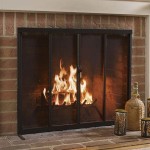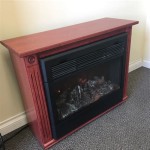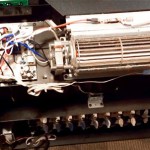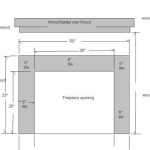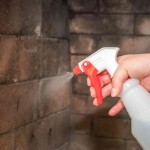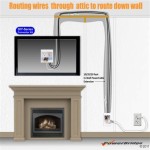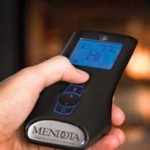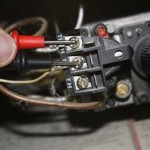The Enduring Appeal of a Fireplace for Your Home
A fireplace, whether a traditional wood-burning hearth or a modern gas-fueled unit, continues to be a highly desirableFeature in many homes. Beyond its functional ability to provide supplemental heat, a fireplace offers aesthetic appeal, creating a focal point and fostering a sense of comfort and ambiance within a living space. The selection and installation of a fireplace require careful consideration of various factors, including heating needs, space constraints, aesthetic preferences, and local regulations.
Understanding Fireplace Types
The market offers a diverse range of fireplace options, each possessing unique characteristics and advantages. A thorough understanding of these differences is crucial for making an informed decision aligned with individual requirements.
Traditional wood-burning fireplaces represent a time-honored heating method, often appreciated for their authenticity and the visual appeal of a natural flame. These fireplaces typically consist of a firebox constructed of brick or stone, a chimney for exhausting smoke and gases, and a damper to control airflow. While wood-burning fireplaces offer a nostalgic experience, they also present several challenges. They require a readily available and affordable supply of firewood, regular maintenance to remove ash and creosote buildup, and adherence to safety protocols to prevent chimney fires.
Gas fireplaces offer a convenient and efficient alternative to wood-burning models. Fueled by natural gas or propane, these fireplaces ignite with the push of a button or the flip of a switch, eliminating the need for manual fire starting and tending. Gas fireplaces are available in various styles, from traditional log sets to contemporary linear designs, and can be installed in existing fireplaces or as freestanding units. They offer excellent heat output and can be easily controlled with a thermostat, providing consistent and comfortable warmth. However, gas fireplaces require a gas line connection and professional installation to ensure safety and compliance with building codes.
Electric fireplaces provide a versatile and cost-effective heating solution for homes without existing chimneys or gas lines. These fireplaces operate by using electric heating elements to generate warmth, simulating the appearance of a real flame with LED lights or other visual effects. Electric fireplaces are available in various sizes and styles, including wall-mounted units, freestanding stoves, and fireplace inserts that can be installed in existing fireplace openings. They are easy to install, require minimal maintenance, and can be used with or without heat, offering ambiance year-round. However, electric fireplaces typically provide less heat output than wood-burning or gas models, making them more suitable for supplemental heating in smaller spaces.
Ethanol fireplaces utilize liquid ethanol fuel to produce a clean-burning flame without the need for a chimney or venting system. These fireplaces are typically portable and can be placed in various locations throughout the home, offering flexibility and convenience. Ethanol fireplaces are available in a range of styles, from tabletop models to wall-mounted units, and can add a touch of modern elegance to any room. However, ethanol fireplaces typically provide limited heat output and require the regular purchase of ethanol fuel. Safety precautions must be taken when handling and refilling the fuel reservoir.
Factors to Consider When Choosing a Fireplace
Selecting the right fireplace involves evaluating several key factors to ensure optimal performance, safety, and aesthetic compatibility with the home's design.
Heating requirements are a primary consideration when choosing a fireplace. The size of the space to be heated, the climate, and the insulation levels of the home will influence the required heat output of the fireplace. Wood-burning and gas fireplaces typically offer higher heat output than electric or ethanol models, making them suitable for heating larger areas. Electric fireplaces are often sufficient for supplemental heating in smaller rooms.
Building codes and regulations govern the installation and operation of fireplaces, particularly wood-burning and gas models. These codes specify requirements for chimney construction, ventilation, clearances from combustible materials, and carbon monoxide detection. It is essential to obtain the necessary permits and inspections to ensure compliance with local regulations and to avoid potential safety hazards. Electric and ethanol fireplaces typically have less stringent installation requirements but should still be installed according to manufacturer instructions.
The aesthetic design of the fireplace should complement the overall style of the home. Fireplaces are available in a wide range of styles, from traditional brick and stone fireplaces to contemporary linear gas fireplaces and sleek electric models. Consider the existing architectural features of the home, the furniture, and the color scheme when selecting a fireplace that will enhance the overall aesthetic appeal of the space. Surrounds, mantels, and hearths can further customize the fireplace and create a cohesive design.
Budget considerations are essential when planning a fireplace installation. The cost of a fireplace can vary significantly depending on the type, size, features, and installation requirements. Wood-burning fireplaces typically have higher installation costs due to the need for a chimney, while electric fireplaces are generally the most affordable option. Gas fireplaces fall in between, requiring a gas line connection and professional installation. Factor in the cost of fuel, maintenance, and accessories when estimating the overall budget.
Proper Installation and Maintenance
The safe and efficient operation of a fireplace depends on proper installation and regular maintenance. Whether installing a new fireplace or maintaining an existing one, adhering to manufacturer instructions and industry best practices is crucial.
Professional installation is highly recommended for wood-burning and gas fireplaces. Qualified installers have the expertise and equipment to ensure that the fireplace is installed correctly, meeting all safety requirements and building codes. They can properly connect gas lines, install venting systems, and ensure that the fireplace operates safely and efficiently. Attempting to install a wood-burning or gas fireplace without the necessary expertise can be dangerous and may violate local regulations.
Regular chimney inspections and cleaning are essential for maintaining wood-burning fireplaces. Creosote, a flammable byproduct of wood combustion, can accumulate in the chimney over time, increasing the risk of chimney fires. It is recommended to have the chimney inspected and cleaned annually by a qualified chimney sweep. The frequency of cleaning may vary depending on the amount of wood burned and the type of wood used.
Gas fireplace maintenance typically involves inspecting the burner, pilot light, and venting system. The burner should be cleaned regularly to remove any debris or buildup that could affect its performance. The pilot light should be checked to ensure that it is burning properly. The venting system should be inspected for any obstructions or leaks. It is recommended to have a gas fireplace serviced annually by a qualified technician.
Electric fireplaces require minimal maintenance, typically involving dusting the unit and cleaning the glass screen. Check the heating elements and controls periodically to ensure that they are functioning properly. If any repairs are needed, consult a qualified electrician. Ethanol fireplaces should be cleaned regularly to remove any spills or residue from the ethanol fuel. Follow manufacturer instructions for cleaning and maintenance.
Regardless of the type of fireplace, it is essential to install and maintain carbon monoxide detectors in the home. Carbon monoxide is a colorless and odorless gas that can be produced by incomplete combustion of fuel. Carbon monoxide detectors can provide early warning of dangerous levels of the gas, allowing occupants to evacuate the home and seek medical attention. Test the batteries of carbon monoxide detectors regularly to ensure that they are functioning properly.
Beyond the practical aspects of heating, a fireplace contributes significantly to the ambiance and perceived value of a home. The flickering flames offer a visual appeal that is both calming and captivating, creating a focal point in a room that draws people together. The crackling sound of a wood-burning fire, or the subtle hum of a gas fireplace, adds an auditory dimension to the experience, further enhancing the sense of relaxation and tranquility.
A fireplace can also serve as a design element, complementing the overall aesthetic of a room. The style of the fireplace, from traditional brick to modern stone or sleek metal, can reflect the homeowner's personal taste and enhance the architectural features of the space. The mantel, surround, and hearth offer further opportunities for customization, allowing homeowners to create a unique and personalized focal point that reflects their individual style.
In the real estate market, a fireplace is often considered a desirable feature that can increase the value and marketability of a home. Many prospective buyers are drawn to the warmth, comfort, and aesthetic appeal that a fireplace provides. A well-maintained and visually appealing fireplace can make a home more attractive and inviting, potentially leading to a quicker sale and a higher selling price.
Choosing the right fireplace is an investment in home comfort, energy efficiency and aesthetic appeal. Careful consideration of these details will ensure that the final choice is a valuable addition to the home for years to come.

5 Benefits Of Having A Fireplace In Your Home Vertical Chimney Care

Fireplace For Your Home Official Trailer Hd

Watch Fireplace 4k Classic Ling From For Your Home

Why Your Home Could Use A Stone Fireplace

Heating Your Home With A Fireplace Doctor Flue Mi Oh

How To Heat Your Home With A Fireplace Homeserve Usa

Watch Fireplace For Your Home

Add A Fireplace To Your Space Modernize

Watch Fireplace For Your Home

4 Things Every Homeowner Should Know Before Installing A Fireplace
Related Posts

